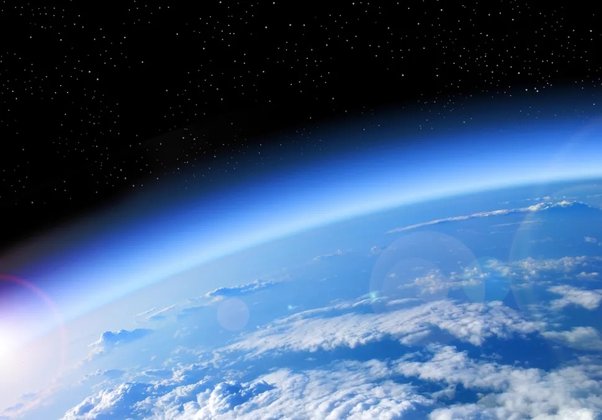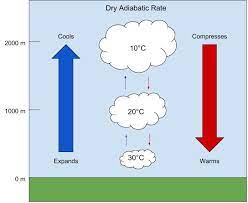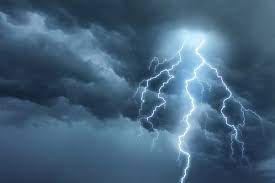Atmospheric Stability and instability play a critical role in the formation and development of weather patterns. Understanding this concept is crucial in forecasting and predicting the weather, as well as in comprehending the various meteorological phenomena that occur in the atmosphere.

Table of Contents
What is atmosphere?
The atmosphere is a layer of gases surrounding Earth. It is held in place by gravity. It consists of a mixture of gases, like nitrogen (about 78%) and oxygen (about 21%), along with trace amounts of other gases such as carbon dioxide, argon, and water vapor. The atmosphere plays a crucial role in supporting life on Earth by regulating temperature, protecting against harmful solar radiation, and participating in the water cycle.
What is atmospheric stability?
The atmospheric stability is the resistance of the atmosphere to vertical motion. In other words, it describes how difficult or easy it is for air to rise or sink in the atmosphere. When the air is stable, it tends to remain in its current position and resist vertical motion, leading to the persistence of current weather conditions.

On the other hand, instability in the atmosphere means that air is more likely to rise or sink, leading to the formation of clouds, precipitation, and other weather patterns.

Factors Affecting Atmospheric Stability
There are several factors that contribute to atmospheric stability and instability like temperature, moisture, and winds. In general, the atmosphere is considered stable when the temperature decreases with height, and unstable when the temperature increases with height.
Temperature
When air rises, it cools down and its temperature decreases, making it more dense and causing it to sink back to its original position. This is known as an inversion layer, and it is an example of a stable atmosphere.
On the other hand, when the temperature increases with height, the air becomes less dense and more buoyant. This leads to the air rising and forming clouds, leading to precipitation and other weather patterns. This type of atmosphere is considered unstable.
Moisture
Moisture is also an important factor in determining atmospheric stability and instability. In general, the atmosphere is considered more stable when it is dry and less stable when it is humid. This is because water vapor is a greenhouse gas, meaning that it helps to trap heat in the atmosphere. As a result, the temperature of the air rises, making it more buoyant and leading to instability.
Winds
Finally, winds also play a role in determining atmospheric stability and instability. In general, the atmosphere is considered more stable when winds are light and less stable when winds are strong. This is because strong winds can cause the air to rise and sink, leading to the formation of clouds and precipitation.
What is Stable Air?
Stable conditions occur when the environmental lapse rate (the rate at which air temperature changes with altitude) is less than the adiabatic lapse rate (the rate at which the temperature of a rising or sinking air parcel changes due to expansion or compression).
Adiabatic processes involve no exchange of heat with the surroundings. As a parcel of air rises, it expands and cools at the dry adiabatic lapse rate (approximately 10°C per kilometer). If the rising parcel’s temperature cools at a rate slower than the environmental lapse rate, it remains cooler and denser than its surroundings, causing it to sink back down.
"Stable atmospheres lead to the formation stratus and stratocumulus clouds, which have relatively stable bases."
What is Neutral Atmosphere?
In a neutral atmosphere, the environmental lapse rate equals the adiabatic lapse rate. As a result, an air parcel’s temperature changes at the same rate as its surroundings when displaced vertically. Neutral conditions are relatively rare and typically occur during transitional periods between stable and unstable atmospheric conditions.
What is Unstable Atmosphere?
In an unstable atmosphere, air parcels that are displaced vertically continue to rise or sink away from their original position. Unstable conditions occur when the environmental lapse rate is greater than the adiabatic lapse rate. As a result, a rising air parcel cools more slowly than its surroundings, becoming warmer and less dense, and continues to rise.

Unstable atmospheres are conducive to the development of convective clouds, such as cumulus and cumulonimbus clouds, which have vertically towering structures and are associated with thunderstorms, heavy rainfall, and severe weather.
Read: Geography